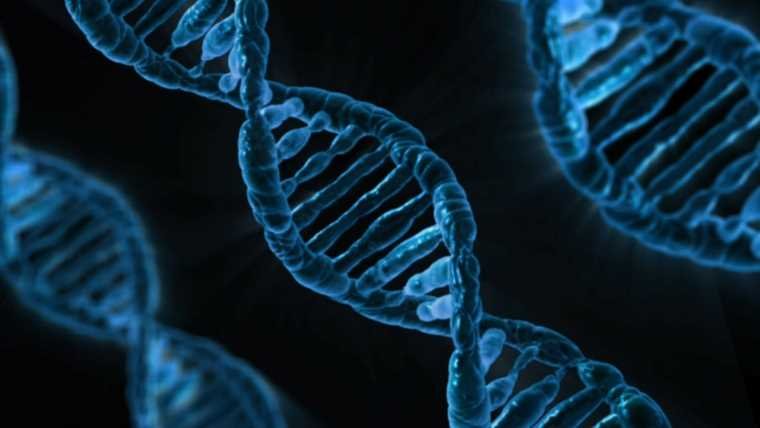A team of researchers studying genetic ‘copy-and-paste’ errors in animal DNA says they have broken the evolutionary code that led to evolution “cooking up” the various species found in the broader animal kingdom, including humans.
Previous efforts had hinted at the idea of replication errors leading to leaps in evolution. However, this study is the first to specifically identify a core group of genes that have been passed along for millions of years, but that have somehow changed their function to evolve new functions along the way.
Genetic Copy-and-Paste Errors at the Heart of Evolution
When animals reproduce, their DNA transfers the genetic “blueprints” needed to grow what is essentially a copy of its host or hosts. There may be some variations based on how those genes express themselves, but for the most part, the child remains the same species of animal as its parent.
But like all other transfers of analog data, there are a number of genetic copy-and-paste errors that result in imperfect data replication. Most of the time, these small changes don’t amount to much, but every once in a while, they lead to a significant enough change that a new species of animal begins to emerge.
Now, a team of researchers from the Centre for Genomic Regulation (CRG) in Barcelona says they have identified a core group of 7,000 genes that can be traced back to the last common ancestor of all “bilaterian” animals alive today. Defined as having a front, a back, a top, and a bottom, bilaterians include all vertebrates (fish, amphibians, reptiles, birds, and mammals) and all invertebrates (insects, arthropods, mollusks, worms, echinoderms, and many more).
They also show that those core genes were able to make a second copy of themselves that evolved to take on entirely new functions. The result is the wide array of animals we see today, all of which share a common ancestor.
Last Common Ancestor Shared 7,000 Core Genes
In their study, which is published in the journal Nature Ecology & Evolution, the CRG team outlines how their work began with studying the genetic blueprints for a subset of bilaterians that included mayflies, centipedes, sharks, octopuses, and humans. After detailed genetic analysis, this work led to a group of 7,000 genes inherited by all of these animals from a single “last common ancestor” animal that evolved over 700 million years ago.
Like all other animal species, this first bilaterian passed its genetic code along to its offspring, which continued to share that DNA with each ensuing generation. Yet, as this process continued over successive generations, something unexpected took place. The same DNA that was tasked with one purpose was inadvertently copied a second time.
Surprisingly, the researchers found that instead of doing the same job as the original gene, these genetic copy-and-paste errors resulted in new versions of the same code that began to experiment with entirely new functions, likely in response to environmental pressures. Before long, DNA that had one purpose had evolved to an entirely new purpose. This is especially true in genes related to brain development and reproductive tissues.
The researchers say this was a totally unexpected finding since genes that are “conserved” over missions of years across numerous species are usually programmed for specific and necessary functions. However, the presence of a second copy of the same code apparently allowed evolutionary pressures to essentially cook up a new species with the extra copy of the same recipe.
“Imagine you end up with two copies of a recipe for paella by accident. You can keep and enjoy the original recipe while evolution tweaks the extra copy so that it makes risotto instead,” explains Federica Mantica, author of the paper. “Now imagine the entire recipe book is copied – twice – and the possibilities it opens for evolution.”
Perhaps even more surprising, it appears these types of events involving genetic copy-and-paste errors have occurred at varying degrees throughout the history of the bilaterian evolutionary tree. Genes designed for one purpose evolved a new one, resulting in the slow but steady speciation of one animal that lived over 700 million years ago into the massive variety of vertebrates and invertebrates we see today.
“The legacy of these events, which took place hundreds of millions of years ago, lives on in most complex animals today,” Mantica explained.
One example of these ancient genes developing new functions involves a series of changes that led to a more complex nervous system. For example, the researchers found one ancestral gene that adapted itself to create myelin sheaths around nerve cells. Such sheaths are critical for rapid data transfer between nerve cells, which led to the high-performance analog computers we call brains.
Another ancestral gene identified by the research team is called FGF17. Once a gene that served a different core nervous system purpose, this gene evolved to play an important role in maintaining cognitive functions in old age. Staying sharp while we age is a hallmark of the more long-lived animal species that evolved millions of years after the last common ancestor.
The same thing happened in other non-human species as well. For example, insects became “specialized” in muscles and in the epidermis for cuticle formation, “contributing to their ability to fly. Something similar happened in the skin of octopuses, where ancestor genes evolved the unique ability to perceive light. This ability, the researchers explain, ended up “contributing to their ability to change color, camouflage, and communicate with other octopuses.”
Study of Genetic Copy-And-Paste Errors Reveals Evolution’s Balancing Act
While the research is merely a first step toward understating how genes evolved over time to create different animal species, the researchers behind this latest finding believe understanding the mechanisms behind these genetic copy-and-paste errors reveals exactly how this is happening. They also believe it challenges researchers to rethink the way genetic changes contributed to evolution.
“Our work makes us rethink the roles and functions that genes play,” said ICREA Research Professor Manuel Irimia, co-author of the paper and researcher at the Centre for Genomic Regulation. “It shows us that genes that are crucial for survival and have been preserved through millions of years can also very easily acquire new functions in evolution. It reflects evolution’s balancing act between preserving vital roles and exploring new paths.”
Christopher Plain is a Science Fiction and Fantasy novelist and Head Science Writer at The Debrief. Follow and connect with him on X, learn about his books at plainfiction.com, or email him directly at christopher@thedebrief.org.

